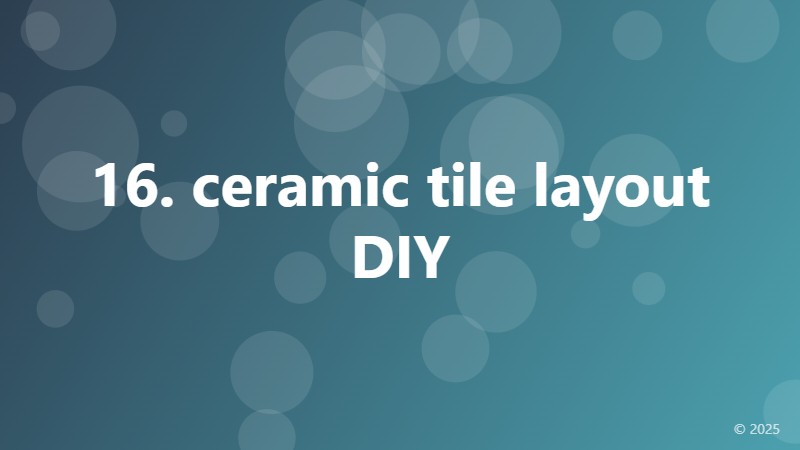16. ceramic tile layout DIY

Getting Started with Ceramic Tile Layout DIY
Are you tired of your old, outdated flooring? Do you want to give your home a fresh new look without breaking the bank? A ceramic tile layout DIY project might be just what you need. Not only is it a cost-effective way to renovate your space, but it's also a great opportunity to get creative and add your personal touch to your home decor.
Planning Your Ceramic Tile Layout
Before you start laying tiles, it's essential to plan your ceramic tile layout carefully. Measure your room accurately, taking note of any obstacles such as plumbing fixtures, electrical outlets, and doorways. Decide on the pattern you want to create, whether it's a simple grid, a intricate mosaic, or a bold geometric design.
Choose a tile layout that complements your room's style and shape. For example, a small room can benefit from a diagonal tile layout, which creates the illusion of more space. A large room, on the other hand, can accommodate a more complex pattern.
Preparation is Key
Before you start laying tiles, make sure your subfloor is level, clean, and dry. Remove any old flooring, and apply a layer of underlayment to ensure a smooth, even surface. Check for any cracks or unevenness and fill them with a patching compound.
Prepare your tiles by cleaning them thoroughly and removing any dust or debris. It's also a good idea to lay out your tiles beforehand to ensure they fit together seamlessly and to make any necessary adjustments.
Laying the Tiles
Start by applying a layer of adhesive to the subfloor, using a notched trowel to spread it evenly. Begin laying your tiles from the center of the room, working your way outward in sections. Use a level to ensure the tiles are straight, and a spacer to maintain even gaps between them.
Use a rubber mallet to tap the tiles gently into place, making sure they're securely attached to the subfloor. As you work, use a damp cloth to wipe away any excess adhesive that squeezes out between the tiles.
Grouting and Sealing
Once you've laid all the tiles, wait 24 hours for the adhesive to set. Then, mix your grout according to the manufacturer's instructions, and apply it to the gaps between the tiles using a grout float. Wipe away any excess grout with a damp cloth, and allow it to dry completely.
Finally, apply a tile sealer to protect your ceramic tiles from stains and spills. Follow the manufacturer's instructions for application and drying times.
Final Touches
Stand back and admire your handiwork! With a little patience and practice, you can create a beautiful ceramic tile layout that adds value and style to your home. Take pride in your DIY accomplishment, and enjoy the fruits of your labor for years to come.